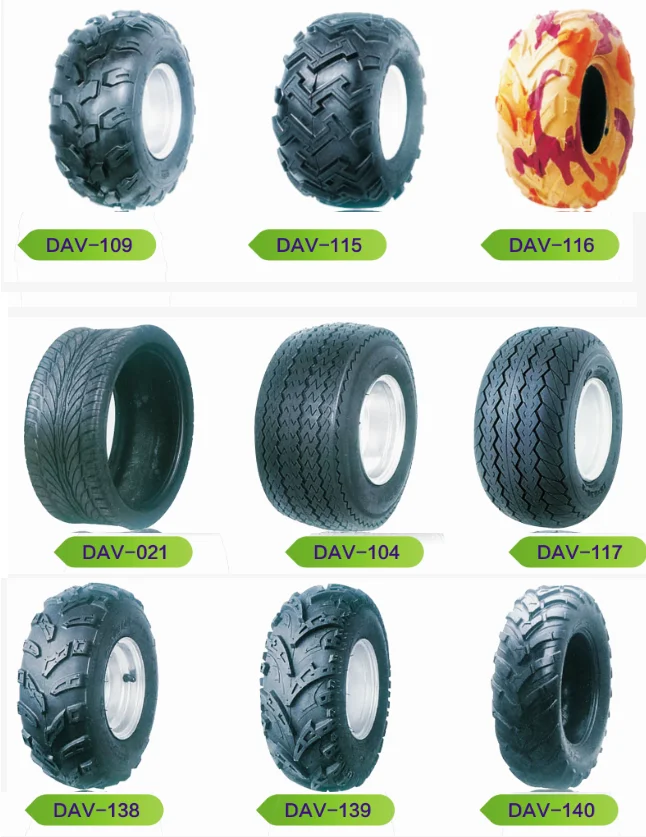When first starting out with an ATV, you may not know what tire pressure to inflate your tires to. This post acts as a simple guide to help you decide what tire pressure works best for you.
I spent a while searching around the internet, and found out there are different tire pressures recommended for different scenarios. I found that most recommended tire pressures are anywhere between 3 psi up to 12 psi.
The most common tire pressure for an average rider on average terrain is going to be around 5-6 psi. If you are carrying extra weight, riding in sand, or want to customize your tire pressure for your needs specifically, then keep reading.
There are a lot of reasons to adjust your tire pressure to get the most out of your ATV while riding. Having the right tire pressure is safer and can prevent unnecessary slipping and helps your tires last longer. It is recommended to check your tire pressure before each ride and adjust according to how you plan to ride for that trip.
On the side wall of your tire there should be printed the specific tire pressure that is recommended for your tire. The maximum recommended pressure is provided by the manufacture. Do not exceed the maximum recommended tire pressure. If you do, you could cause damage to the tire and risk a tire erupting, which can cause injury.
Just changing your tire pressure one psi can make a big difference in how your ATV handles. A higher tire pressure is better if you plan on riding with multiple people on one ATV or if you are carrying extra load. Such as, hunting gear or camping gear.
You could also add a little air to the tire if you plan on riding on mostly hardened terrain. Sometimes through really muddy terrain, an increased tire pressure can help you gain traction on the bottom of the mud pit and will help you get out a little easier.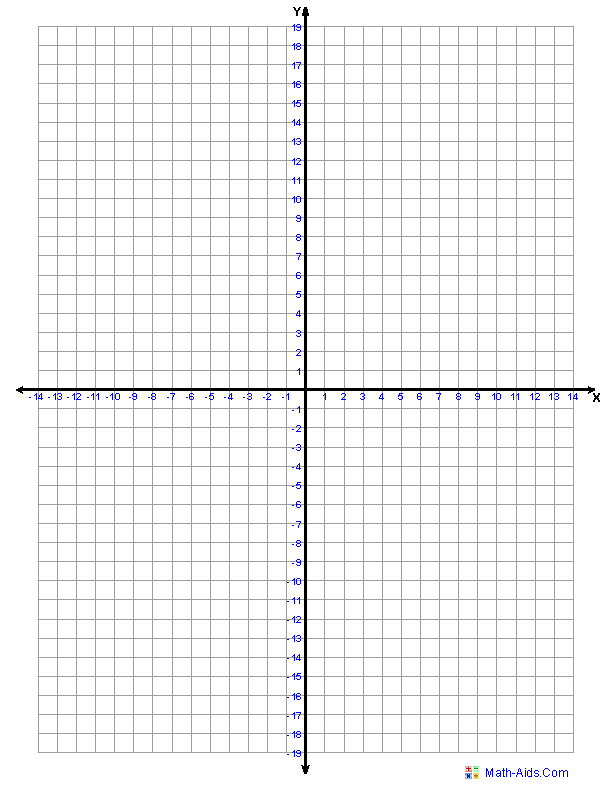 If there is no bottom for the tires to grip, less tire pressure will help with gaining traction in the mud itself.
If there is no bottom for the tires to grip, less tire pressure will help with gaining traction in the mud itself.
Having a higher tire pressure can also help protect the rims on the ATV. Inflating the tire too much can make it easier for a sharp rock or log to puncture the tire, so be careful.
If you’re riding at higher speeds, carrying extra weight, or the terrain is hard packed, I recommend 7-8 psi.
Benefits of higher tire pressure:
A lower tire pressure is extra useful for places you need extra traction. Such as, sandy areas or areas with loose dirt or gravel. If you’re going to be riding through a lot of muddy terrain, a lower tire pressure might be something to consider as well.
With a lower tire pressure the tire is able to grab on to the terrain better, giving you more traction in places you need it. When riding in the snow, a lower tire pressure is also extremely helpful. More of the tire is in contact with the ground, limiting the amount your tire will slip.
When riding in the snow, a lower tire pressure is also extremely helpful. More of the tire is in contact with the ground, limiting the amount your tire will slip.
If you’re riding in rocky, sandy, muddy, snowy, or other loose terrain, I recommend 3-4 psi.
Benefits of a lower tire pressure:
I found it hard to use the tire pressure gauge I used on my truck tires because the scale was not accurate enough. I couldn’t tell if it was set to 5 or 6 psi. It makes sense because the tire pressure on my truck it so much higher and one psi off doesn’t make a difference. I found it so much easier to just get a gauge made for ATV tires.
I recommend the Jaco Elite Tire Pressure Gauge I found here on Amazon. It goes up to 15 psi (I’ve never had to go above 10 psi for my ATV tires) and it works great. It will show the psi down to a tenth of a pound, which is exactly what I needed and way more accurate than the gauge I use for my vehicles.
It will show the psi down to a tenth of a pound, which is exactly what I needed and way more accurate than the gauge I use for my vehicles.
To actually inflate the tires you could use an air compressor with the proper attachments or even just a bike tire pump. I used to use a simple bike pump, but I got sick of inflating a little, checking the pressure, inflating a little, and checking the pressure again, back and forth.
I ended up just getting a tire pump with compressor made by Slime. The gauge is accurate down to one psi and all comes compact in a nice little container. It will also work on cars and trucks, so I leave it in my truck now for emergencies, and it has come in handy a couple of times on the trails. I use the Slime Direct Drive Tire Inflator found here on Amazon.
I usually fill the tires with the compressor, and make any little changes with, the more accurate, Jaco gauge.
The tire pressure should be the same per axle. If your owners manual suggests a certain pressure for your back tire, that goes for both left and right back tires. This is also the case for the front tires. Make sure both tires of an axle are set to the same psi. This is especially important for the front tires because any difference in tire pressure could change the way the ATV handles.
This is also the case for the front tires. Make sure both tires of an axle are set to the same psi. This is especially important for the front tires because any difference in tire pressure could change the way the ATV handles.
Some riders like to have the back tires set to a slightly lower psi. This improves traction of the rear tires but keeps the handling nice in the front tires. Allowing you to still steer well, while increasing grip on the track. Also when racing, the back tires tend to heat up a little more which adds to the tire pressure. Setting the back tire pressure a little lower can help compensate for how the tire acts once its warmed up a bit.
Setting your tire pressure properly can help prevent unnecessary puncture when riding. Nothing’s worse than getting a flat miles from where you need to be. Usually, having a higher tire pressure in your tires will help prevent punctures. When a tire is inflated to a higher pressure, the air in the tire compresses less and it’s more likely to bounce off of whatever you hit.
On the other hand, having too high of a tire pressure can cause punctures because the air has no where to go putting more strain on the tire at the point of impact.
There are a few options available to help prevent getting a flat on your ATV. You could upgrade to 8-ply or even 12-ply tires. Most ATV’s come stock with a set of 4 or 6-ply tires. If you go with 12-ply you will have virtually indestructible tires. Even if you do get a puncture, the tires should hold up long enough for you to get back off the trail.
Some other options include:
There are a few things you could watch out for while your riding to help you gauge if your tires are low or overfilled. If you notice your ATV does not corner tightly or you feel a wobble at medium speeds, then your tire pressure is too low. If you tire is under inflated, your tire will roll slightly when cornering. If you feel your rims are hitting roots or rocks on the trail, or you notice them getting dinged up, it is possible your tires are under inflated.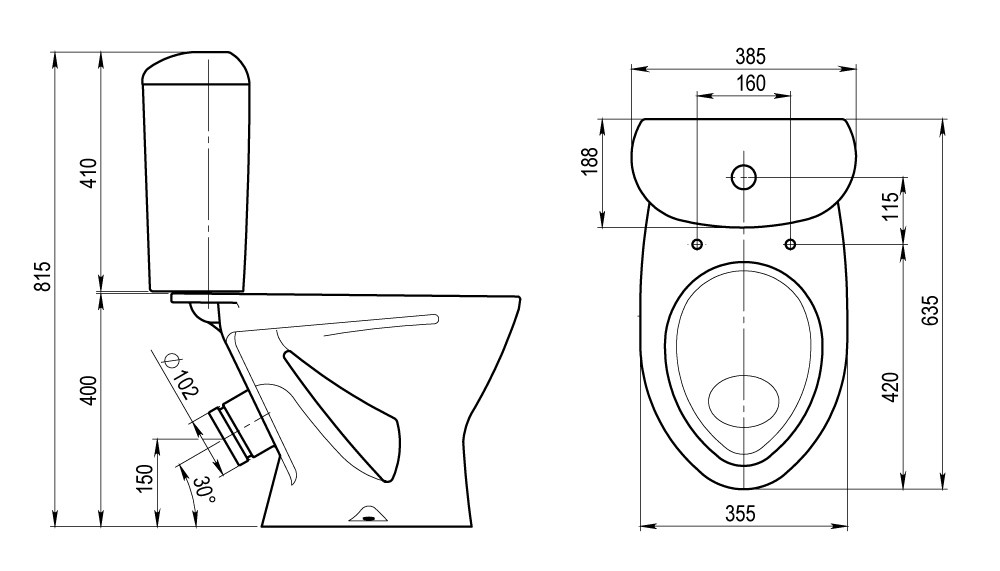
If your tires are over inflated you will notice a loss of grip on loose terrain. This happens because your tires aren’t getting enough contact with the trail, and your tires will spin more than they should.
Something else to watch out for is the psi change due to altitude and temperature. If you want to see if this affects you, check your tire pressure at the start of a ride, and then again after about 30 minutes of riding. If the pressure is too high for your liking, just set them a little lower at the beginning of your ride next time.
When you notice the knobbies on the sides of the tire start to split or break off, that’s a good indication it’s time for new tires. Tires wear away over time, and as they lose thickness they are more prone to punctures and going flat.
As your tires wear away you will get less traction, which will affect cornering and acceleration. It is always recommended to keep your tires in good condition and replace them when necessary.
Sharing is caring!
The more you know about your CFMOTO ATV parts, the safer you’ll be when you are operating it. One of the most important components of your ATV is the tires. The tires establish the grip on all surfaces, support the payload, and allow you to travel across rugged terrain.
One of the most important components of your ATV is the tires. The tires establish the grip on all surfaces, support the payload, and allow you to travel across rugged terrain.
Below is a brief explanation of ATV loading and inflation rating. If you have any further questions about your tires, feel free to contact a CFMOTO dealer near you.
When you take a look at an ATV tire, there are a series of numbers imprinted on the side of the tread. For example, you may see the number 25×10-12. What do the numbers mean?
● The first number in this sequence is the height of the tire in inches when it is properly mounted and inflated to the manufacturer’s suggested air pressure.
● The second number is the width of the tire when it is properly inflated.
● The third number is the diameter of the inside of the tire in inches as well as a measurement of the diameter of a wheel the tire is meant to be mounted to.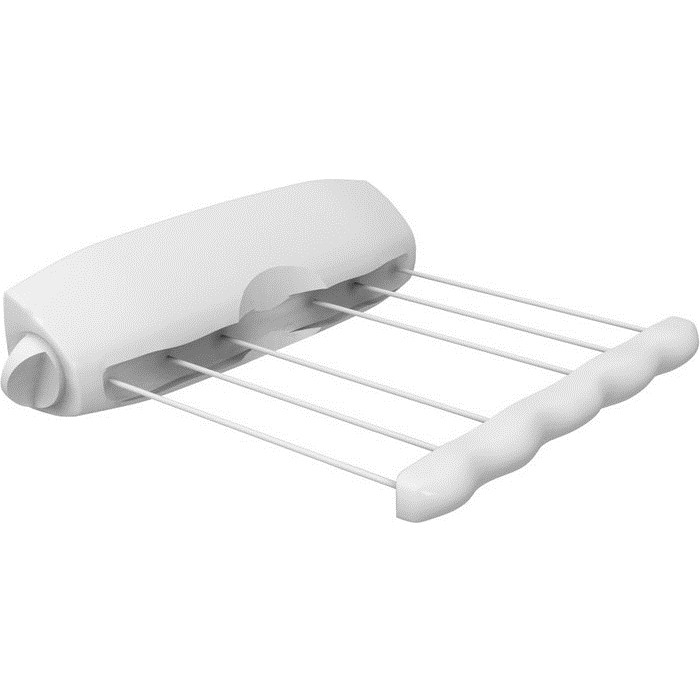
When combined, all of these numbers give you the information you need to understand the ATV loading and tire inflation rating.
It is not uncommon to assume that it’s the tire’s rubber or steel rims that support the weight of the ATV. However, the air pressure inside the tire is what supports the entire payload including the machine, rider, and cargo.
Your tire's load rating tells you the maximum weight capacity that your tire is designed to handle. The higher the tire-load rating, the more weight your tire can handle. However, the tire load rating number is not the actual weight limit. For example, a tire-load rating of 105 means that these tires can handle a maximum weight capacity of up to 2,039 pounds (925 kilograms). In addition, your tire also has a different marker on it that tells you the load rating at a given inflation pressure. The tire's load rating is considered part of the markings on your ATV tire that make up its service description.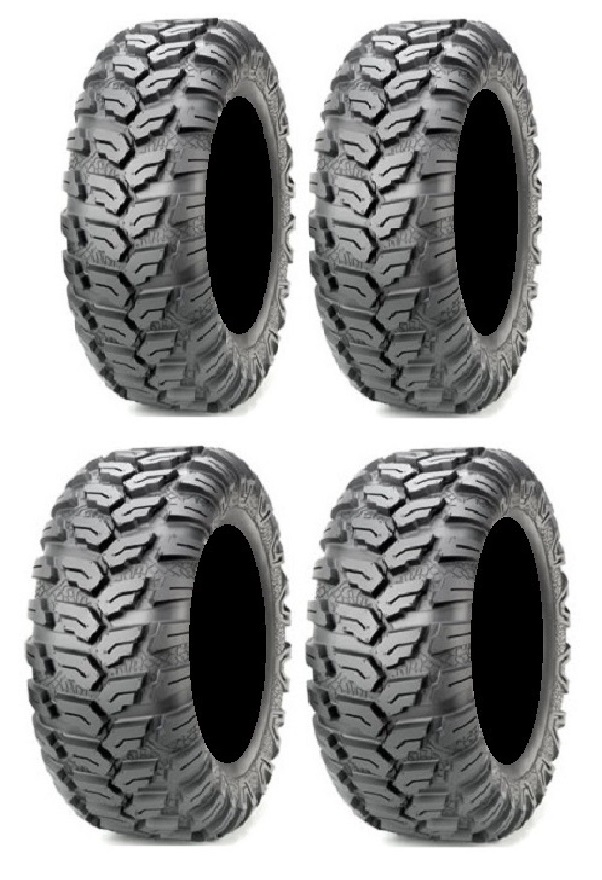
The second piece of information that makes up your tire's service description is its speed rating. The speed rating is represented by a letter and tells you the maximum speed at which this tire can go, assuming the car isn't carrying a load that exceeds the tire's load rating. Since the speed rating is a letter (for example, a speed rating of "S" means that the tire can handle a maximum speed of up to 112 miles per hour/180 kilometers per hour), you'll have to check out a chart to learn what speed each of letters indicates.
There are a number of other markings on your ATV tire, including the uniform tire-quality grading (UTQG) system ratings from the U.S. National Highway Traffic Safety Administration; these ratings tell you the tread wear, traction and temperature capabilities of your tires. Some manufacturers' information, such as tire type, width, aspect ratio, construction type, and rim diameter, is also included.
All of this information combined gives you a total reading of your ATV tire loading and inflation rating.
CFMOTO offers high-performance rugged ATVs and side-by-sides for recreational and work use. Experience more together with a world-class quality ATV manufacturer.
For more information about our products, contact your local CFMOTO dealer today!
A four-wheeler is an SUV by definition, which means that tires for a ATV are the most important part that ensures its flotation. Going to conquer the next track, you must be confident in your four-wheeler.
Whether racing or riding a quad over rough terrain, you can count on a safe and comfortable ride. Experienced riders know that only high-quality ATV tires can provide maximum comfort and safe handling of this exciting vehicle.
Given the fact that the ATV was originally destined to conquer the off-road, manufacturers shoe SUVs in tires that provide confident driving on hard dirt roads. Naturally, a car on such wheels can also zip along the highway, although driving on public roads for most models is prohibited by traffic rules.
Naturally, a car on such wheels can also zip along the highway, although driving on public roads for most models is prohibited by traffic rules.
Even if you are not a professional athlete, you are unlikely to resist the temptation to conquer the viscous wetlands, or test the quad in liquid mud to evaluate its ability to overcome impassable areas. After all, that's what you bought the SUV for. Is not it? And if so, then it is clear that ordinary quad tires are of little use for sorties into the area, replete with deep puddles filled with viscous mud. It's time to think about equipping your ATV with real mud tires.
Real mud tires, unlike standard tires, have larger lugs that can bite into loose soil or sand. The tread, in the form of a discharged Christmas tree, resembles a pattern on tractor wheels. The diameter of such tires is increased and, depending on the model, ranges from 25 to 34 inches.
The most sought after ATV tires are between 26 and 28 inches as they fit most ATVs without any suspension modifications. The width of the cross-country tires is slightly larger than the standard tires, and the width of the front and rear tires is different. This allows the front tires to follow their own path, while the rear tires follow a slightly different path, gripping the curb and allowing you to go a lot further.
Under normal operating conditions, the main parameter that affects the stability and handling of the ATV is the crown - the tread area in contact with the road surface. The larger the contact patch, the better the handling on firm ground. Therefore, if you are a fan of high speeds, like to maneuver and ride on rough terrain full of hard dirt roads, forest rolled roads, as well as any other hard ground, choose tires with a radial cord construction (example 1, example 2, example 3). Also, the radial design of the cord very well fulfills the bumps that can get in your way, a protruding tree root, stone or something else, the radial design will allow you to overcome this bump in the most comfortable way!
Also, the radial design of the cord very well fulfills the bumps that can get in your way, a protruding tree root, stone or something else, the radial design will allow you to overcome this bump in the most comfortable way!
ATV wheels require softer, lighter rubber for maximum road contact and traction to confidently tackle swampy terrain. Cross-country ability is enhanced by a special tire design. An important role belongs to the lamellas, which have a peculiar shape and optimal height. The ability of the lugs to self-clean is very important, since the adhering dirt greatly complicates the patency on loose soils. Sidewall strength is also important for mud tires. Passing elastic wheels on deep ruts is associated with the risk of damage. The presence of strong sidewalls minimizes such risks.
The diameter of the tires affects the ground clearance of the all-terrain vehicle, the increase of which increases its cross-country ability. The width of the tire changes the area of its contact with the road.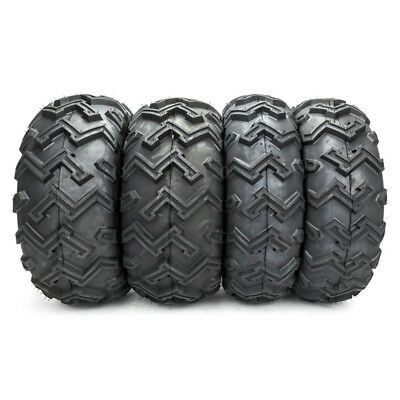 Wider profiles sink less into soft and loose surfaces, helping you to move confidently through the mud.
Wider profiles sink less into soft and loose surfaces, helping you to move confidently through the mud.
When choosing tires for an ATV, you should proceed from the expected conditions of its operation. Ideally, tires should provide comfortable driving, both on hard dirt roads and in mud. However, in practice it is impossible to achieve such results. Different manufacturers solve this difficult problem in their own way. In principle, all solutions come down to the creation of rubber optimized for use on a certain type of road: solid dirt tracks, or loose soils, mud, sand, grass. There are also all-purpose tires that provide average performance on different surfaces.
|
|
| DAKAR 2016. SERGEY KARYAKIN IN THE QUAD CATEGORY. |
The well-known American manufacturer ITP has succeeded in creating the perfect tire.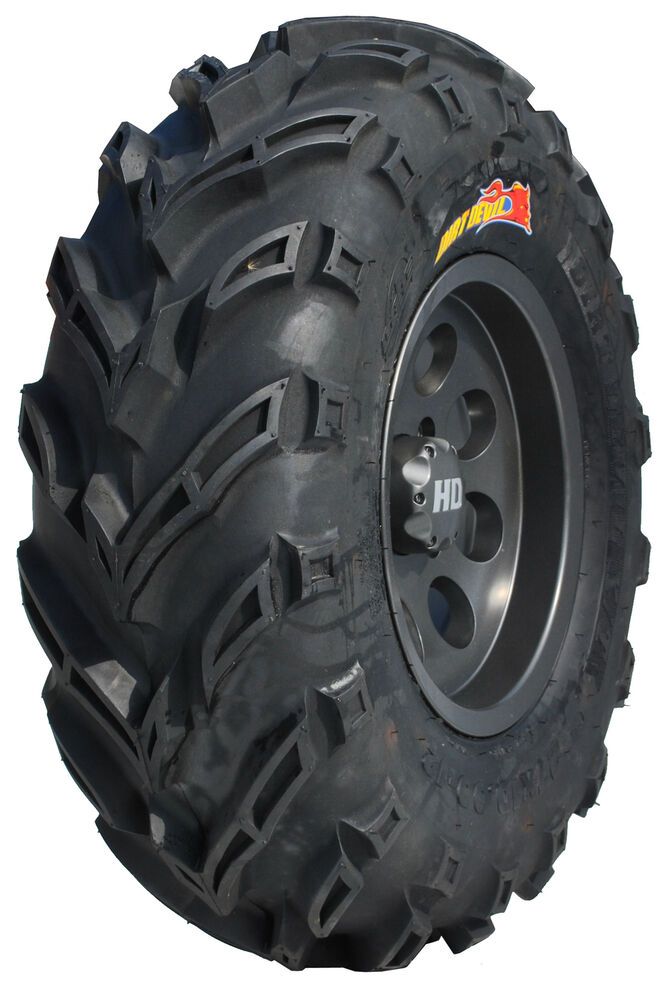 It is by far the #1 tire and rim brand in its class. ITP products are known and bought by professional riders and extreme sports enthusiasts all over the world. Our well-known compatriot driver Sergey Karyakin participated in the Paris-Dakar race on tires with ITP rims. The ITP range includes the following tire types:
It is by far the #1 tire and rim brand in its class. ITP products are known and bought by professional riders and extreme sports enthusiasts all over the world. Our well-known compatriot driver Sergey Karyakin participated in the Paris-Dakar race on tires with ITP rims. The ITP range includes the following tire types:
ITP tires are produced exclusively in the USA, which is an additional guarantee of their high quality.
The softness of ITP tires is superior to all known brands. But this indicator is very important for off-road driving. In an effort to find the best properties for different roads, ITP tire developers create tires for all conditions of use, creating new and unique treads that can cope with their tasks on any type of surface.
The main advantages of ITP tires include:
Just to add, ITP also makes excellent rims for the ATV in various sizes, including beadlock and reversible beadlocks.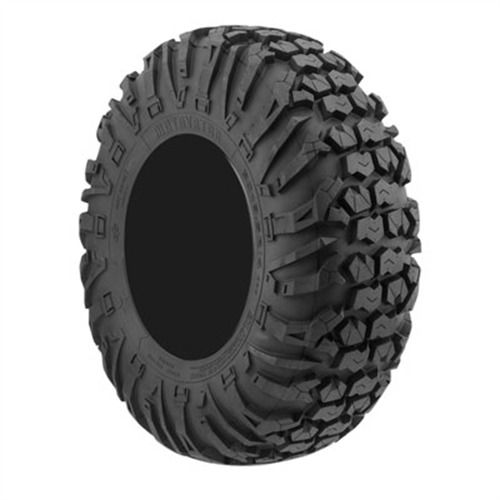 The discs are made of durable aluminum alloy and are lightweight and stylish. They are compatible with sport and utility models of modern ATVs.
The discs are made of durable aluminum alloy and are lightweight and stylish. They are compatible with sport and utility models of modern ATVs.
ITP wheels are produced using an original casting technology that provides them with an enviable resistance to deformation and cracking. In the US, ITP provides a lifetime warranty on its discs. The polished surfaces of these wheels go well with the matte color of the tires and give the SUV a touch of special drive.
Equipping your ATV with ITP wheels and tires, you can safely conquer the most difficult tracks on it. It is by far the #1 brand for ATV tires and rims.
Tire pressure affects the flotation, stability, handling and smoothness of the ATV. Therefore, it is important to adhere to the optimal parameters, which depend on the type of coating and load. What pressure is recommended for CFMOTO ATVs - we will tell in the article.
CFMOTO indicates the recommended pressure in kilopascals (kPa).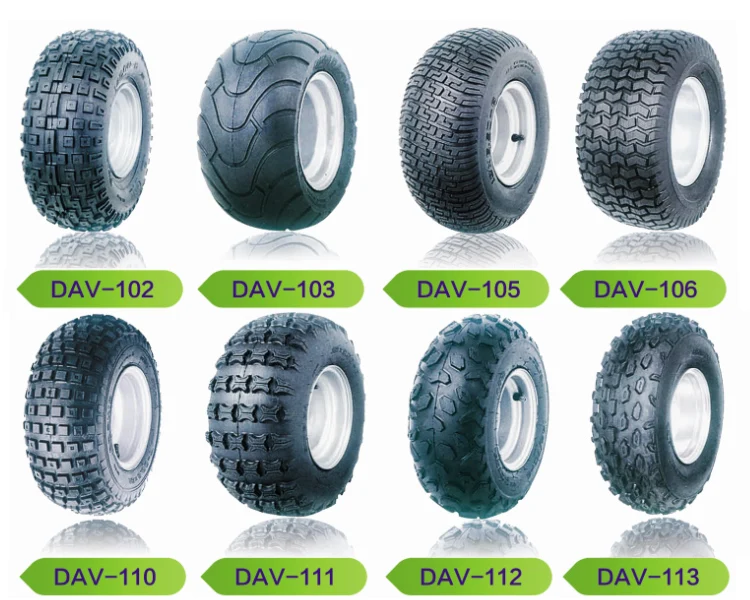 1 kPa equals 0.0098 atmospheres (atm) or 0.145 pounds-force per square inch (psi). It is important not to confuse these units of measurement when inflating tires.
1 kPa equals 0.0098 atmospheres (atm) or 0.145 pounds-force per square inch (psi). It is important not to confuse these units of measurement when inflating tires.
The recommended tire pressure for CFMOTO ATV is indicated in the instruction manual and on the vehicle itself in the area of the left rear fender.
Tires are marked with the maximum pressure they can withstand.
Low tire pressure improves off-road capability, allowing the ATV to sink less in mud, swamp, snow or sand. This is due to the fact that the contact patch of the tire with the surface increases, and the specific pressure on the ground decreases. In addition, poorly inflated tires are less “blurred” with dirt, more easily leave the rut and roll over obstacles such as trees, stumps or large stones lying on the road.
Most CFMOTO ATVs are equipped with ANCLA tires, which have a normal pressure of 45 kPa according to the manufacturer. This is sufficient for off-road routes. A reasonable lower limit is up to 35 kPa. It is possible to bleed even more air only if there are beadlocks - devices that securely press the tire to the side of the disk.
This is sufficient for off-road routes. A reasonable lower limit is up to 35 kPa. It is possible to bleed even more air only if there are beadlocks - devices that securely press the tire to the side of the disk.
All-terrain vehicle tires with a car fit must have a higher pressure - from 70 kPa, the exact parameters depend on the model.
If the pressure is too low:
It is better to increase tire pressure before a long trip on asphalt or other hard surface. This will increase stability and control in corners and on a straight line - due to less deformation of the rubber. In addition, the tread will not wear out as much.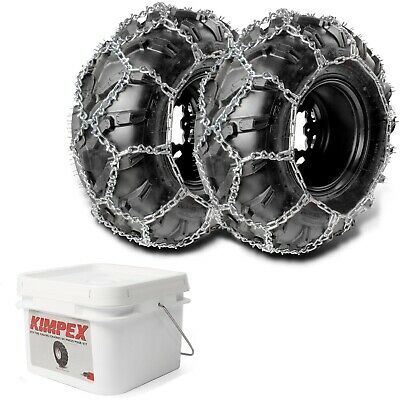
The pressure should also be increased when transporting a heavy load and a passenger.
Optimum tire pressure for a CFMOTO ATV with a motorcycle seat when driving on asphalt is 70-90 kPa.
If the pressure is too high:
It is advisable to do this before every ride - when the tire is cold. You will need a low pressure gauge to check. When using a conventional car, there will be a large error.
The recommended tire pressure for CFMOTO motorcycle seated ATVs is 45 kPa. For all-terrain vehicles (SSV), the optimal parameters are different - more than 70 kPa. Before carrying a passenger and a heavy load or a long drive on asphalt, you can pump more.